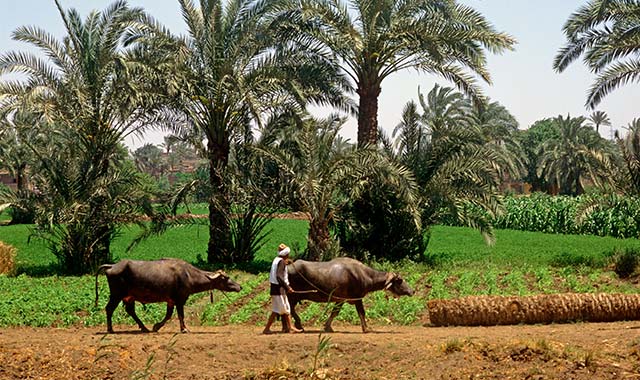The agricultural system in Egypt is one of the oldest in the world, dating back to ancient times when the Nile River was the lifeline of Egyptian civilization. Today, agriculture remains a crucial part of the economy, even though it faces modern challenges like water scarcity and urbanization.
Here’s a clear breakdown of Egypt’s agricultural system:
1. Farming Types
a. Irrigated Agriculture
- Most Egyptian farming depends on irrigation from the Nile River.
- The land is irrigated using canals, pumps, and traditional methods like flood irrigation.
- Main areas: Nile Delta, Nile Valley, Fayoum Oasis.
b. Rain-fed Agriculture
- Minimal, found only in small areas in the northwest coastal regions.
- Rainfall is very low and unreliable.
c. Desert Agriculture
- Expanding due to government projects like the Toshka Project.
- Uses underground water and drip irrigation systems.
2. Major Crops
- Cereals: Wheat, maize (corn), rice.
- Cash crops: Cotton (historically important), sugarcane, and sugar beet.
- Vegetables & fruits: Tomatoes, potatoes, onions, citrus fruits, grapes, and dates.
- Legumes & oil crops: Lentils, beans, sunflower, and peanuts.
3. Farming Practices
- Most farms are small-scale (less than 2 hectares).
- Use of traditional tools is still common, but mechanization is increasing.
- Use of chemical fertilizers and pesticides is widespread.
- Modern systems like greenhouses, hydroponics, and drip irrigation are growing in use, especially in desert areas.
4. Irrigation System
- The Nile River is the primary water source.
- The system includes:
- Aswan High Dam (controls floods and stores water).
- Network of canals and drains.
- Modern challenges: water shortage, salinization, and inefficient water use.
5. Role in the Economy
- Agriculture employs about 25% of the workforce.
- Contributes around 11–12% to GDP.
- Provides food for the population and raw materials for industries.
6. Challenges
- Water scarcity (especially due to climate change and the Grand Ethiopian Renaissance Dam).
- Population growth putting pressure on land and food resources.
- Urban expansion taking over fertile land.
- Dependence on imported food (like wheat).
Government Efforts & Projects
- Reclamation of desert land for farming.
- Promotion of efficient irrigation methods.
- Encouraging agribusiness and food industries.
- Projects like:
- 1.5 million feddan project (to expand arable land).
- Toshka Project and East Owainat.



